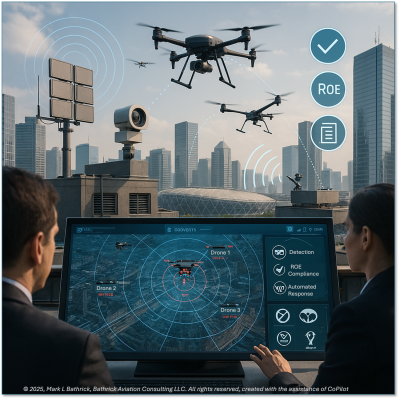What causes a drone to fly?
It’s a simple question that be answered with
physics and charts, but the question really isn’t about logistics when we’re talking about flying a drone for commercial purposes. Various technologial advances have meant that the actual process of getting a UAV off the ground is easier than ever.
Proof of that
was on full display at Interdrone 2016, where announcements about new products and updates around Part 107 dominated many of the conversations that took place in the sessions and on the exhibit floor. It’s clear that the process to take to the sky is easier than ever due to the incredible advancements in hardware, software and automation capabilties. All of that means the answer to the question above isn’t about aerodynamics, but is instead about something else.

Skyward CEO Jonathan Evans (left) and DroneDeploy CEO Mike Winn.
That something else is what companies like Skyward and DroneDeploy are focused on. During the event, they
announced a partnership that will bring together Skyward’s drone operations management platform and DroneDeploy’s data mapping and processing tools. Similar to the partnerships Skyward has announced with
senseFly and
PrecisionHawk, this new partnership is about a horizontal integration that represents the creation of a powerful end-to-end workflow, which leads us to the answer we’re looking for.
What causes a drone to fly is when someone makes a decision to fly one. That might seem like a redundant answer, but for large organizations it absolutely is not a simple issue or conclusion. Drones represent an unknown risk in terms of everything from liability to ROI for organizations of all sizes, and being able to manage such things is a key factor in how and when that decision gets made.
After all, these decisions really aren’t about logistics. Companies like PrecisionHawk and senseFly already have that handled. DroneDeploy users
have now mapped a total of more than 5 million acres across 130 countries. The challenges commercial users have and will continue to run into, especially under Part 107, are mostly related to the business concerns that are associated with operating a UAV. They’re related to convincing a decision maker that issues about legality and logging are handled. They’re related to business decisions and questions that need to be sorted out before a drone gets into the air.
Companies like Skyward, DroneDeploy, senseFly and PrecisionHawk have realized they can help businesses find those answers, but they can do so in a more effective way when they’re able to present those people with complete solutions. Those complete solutions help owners and operators collaborate in an efficient way and can enable that initial decision to literally get off the ground.
Partnerships like the ones Skyward has formed with these companies represent the future of the commercial drone industry, as they’re designed to not only serve the needs of anyone currently flying a drone, but provide answers to questions that are being asked by individuals and organizations that aren’t currently using the technology. Part 107 has opened to door for operations of all types, and partnerships like these will ensure the needs of owners, operators and clients are effectively served.
Doing so is what will get and keep drones in the air for enterprise customers today and far into the future, all of which has very little to do with aerodynamics.



















Comments